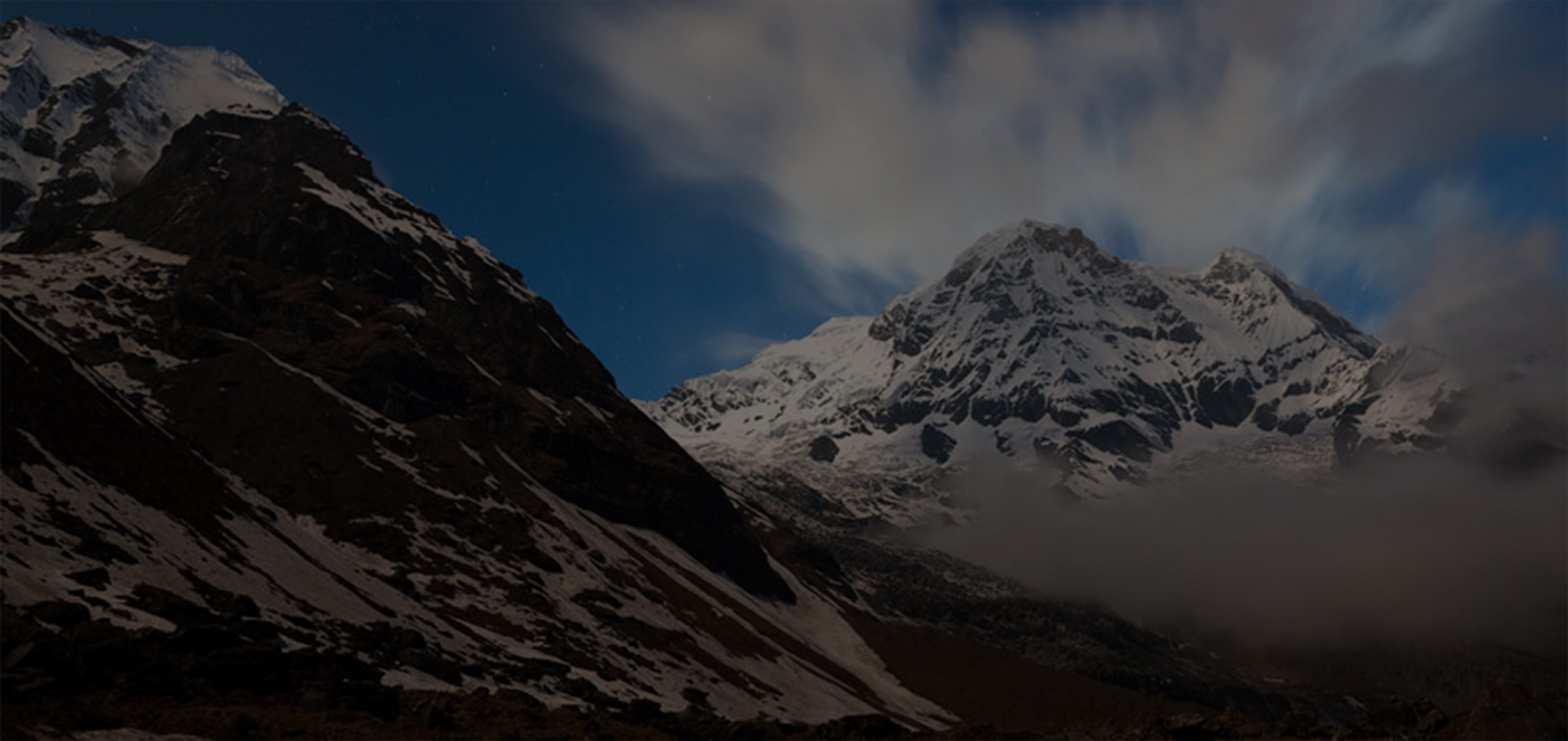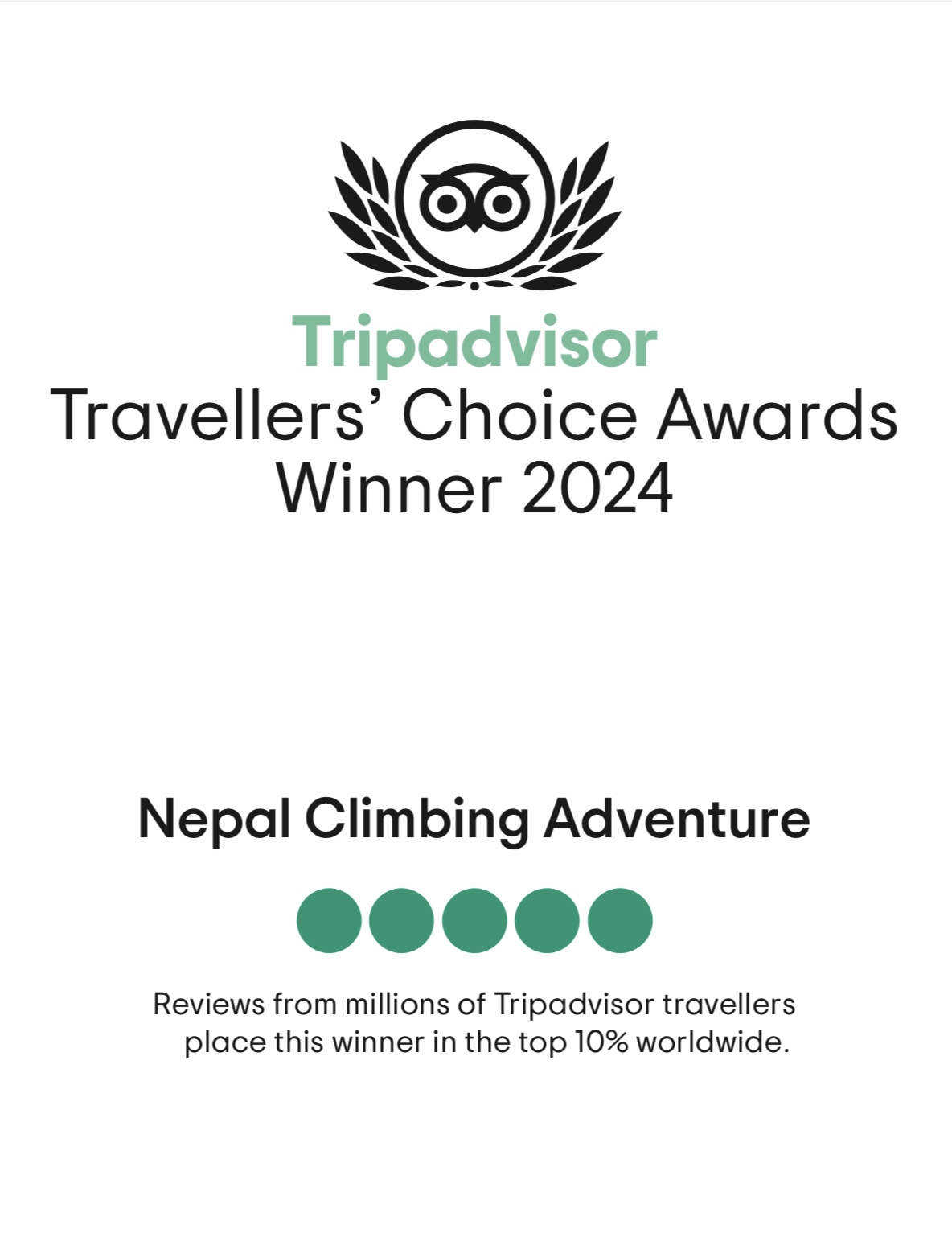Introduction
Regarding off-the-beaten-path treks in Nepal, two routes often make it to the top of every trekker's list: the Manaslu Circuit and Annapurna Circuit. Both trails are rich in natural beauty, cultural immersion, and adventure, yet they offer distinct experiences.
The Manaslu Circuit is known for its remote, untouched charm, leading trekkers through hidden villages and less-traveled paths where traditional mountain life remains intact. This trail feels like a step back in time. It is ideal for those looking for a more rugged and secluded experience in the Himalayas.
On the other hand, the Annapurna Circuit is Nepal’s iconic trek, offering a well-established route through incredibly diverse landscapes—from lush subtropical forests to high alpine passes. Known for its popularity and accessibility, the Annapurna Circuit attracts trekkers worldwide with its blend of challenging high-altitude hiking, varied scenery, and cultural encounters at every turn.
Choosing Manaslu Circuit vs Annapurna Circuit can be a challenge. The Manaslu Circuit may appeal to adventurers seeking solitude and untouched wilderness, while the Annapurna Circuit offers a classic, social trekking experience with tea houses, infrastructure, and awe-inspiring vistas.
In this guide, we’ll dive into the unique features, highlights, and challenges of each trek, helping you discover which journey is perfectly fit for your Himalayan adventure. Let’s compare what Manaslu Circuit and Annapurna Circuit has to offer.
Why Should One Trek the Manaslu Circuit?
Trekking the Manaslu Circuit offers an experience unlike any other in Nepal. Here are some compelling reasons why it’s worth exploring:
1. Authentic Wilderness and Remote Experience
- The Manaslu Circuit remains less traveled, making it ideal for those seeking solitude and pristine wilderness. The trail leads through lush forests, serene valleys, and rugged alpine terrain, creating a peaceful and immersive experience in nature.
2. Rich Tibetan-Influenced Culture
- As you trek through villages like Sama Gaun and Samdo, you’ll find communities deeply influenced by Tibetan Buddhism. The region's monasteries, chortens, and Mani walls provide an authentic cultural immersion, allowing trekkers to witness Himalayan traditions that have remained largely unchanged for centuries.
3. Breathtaking Mountain Views
- With Mt. Manaslu (8,163m) towering above, the trail offers stunning vistas of one of the highest mountains in the world. The circuit showcases uninterrupted views of peaks like Himalchuli and Ngadi Chuli, making it a paradise for photographers and mountain enthusiasts.
4. Challenging Adventure with Fewer Crowds
- The trek is physically demanding, especially the ascent over Larke Pass (5,106m). However, fewer crowds mean you’ll have the trail mostly to yourself, allowing for a more personal and peaceful experience.
5. Exploration of Restricted and Pristine Areas
- As a restricted trekking area, the Manaslu region requires special permits, which helps limit the number of trekkers and preserves the environment. This regulation keeps the area unspoiled, giving trekkers a chance to enjoy an untouched landscape.
6. Flexible Options for Side Trips
- Manaslu Circuit offers additional trails to explore, like the Tsum Valley, known for its preserved cultural heritage, ancient monasteries, and vibrant festivals. Adding side trips offers an even deeper look into the region’s unique culture.
7. Sustainable and Eco-Friendly Trekking
- With its relatively low number of visitors and commitment to responsible tourism, the Manaslu Circuit allows for a more sustainable trekking experience. Efforts by local communities and conservation projects have helped maintain the environment, making this trek a better choice for eco-conscious adventurers.
In short, the Manaslu Circuit is perfect for those who crave a challenging trek through remote, culturally rich, and environmentally pristine areas. It’s a journey that combines adventure, breathtaking landscapes, and cultural immersion in a way few other treks can match.
Why Should One Trek the Annapurna circuit?
The Annapurna Circuit is one of Nepal's most iconic treks and for good reasons! Here’s why it should be on your bucket list:
1. Unparalleled Landscape Diversity
- The Annapurna Circuit offers incredible landscape variety, ranging from lush subtropical forests and terraced fields to arid plateaus and high-altitude deserts. It’s one of the few treks where you can experience such diverse scenery, including views of Annapurna, Dhaulagiri, and Machhapuchhre.
2. Flexibility and Accessibility
- The circuit is well-connected and flexible, allowing trekkers to tailor the route to their time and interests. You can shorten or extend the trek based on your preferences, and with villages spaced out along the route, there are plenty of spots to rest and acclimate.
3. Rich Cultural Experiences
- The trek weaves through various ethnic villages, allowing you to witness the cultural blend of Hindu and Tibetan-Buddhist influences. Passing through areas like Manang and Mustang, you’ll experience traditional hospitality, local festivals, and monasteries set against breathtaking backdrops.
4. Challenging but Manageable High-Altitude Pass
- The Thorong La Pass (5,416m) is the highest point of the circuit and a highlight for many trekkers. The climb is challenging yet accessible for those with moderate fitness, and reaching the pass is a rewarding achievement with panoramic views.
5. Well-Developed Teahouse Infrastructure
- The Annapurna Circuit has a robust network of teahouses, offering everything from basic accommodation to more comfortable lodges with hot showers, Wi-Fi, and diverse food options. This makes the trek accessible to a wide range of trekkers, from budget-friendly options to those seeking extra comfort.
6. Spectacular Side Trips and Extensions
- The Annapurna Circuit has numerous side-trip options. You can explore Tilicho Lake—one of the highest lakes in the world, or detour to the sacred Muktinath Temple. These side trips add more depth and variety to the trekking experience.
7. Ease of Permits and Independent Trekking
- Unlike restricted areas, the Annapurna Circuit requires only an Annapurna Conservation Area Permit (ACAP) and a TIMS card, and you’re free to trek solo if you choose. This freedom offers more flexibility for solo adventurers and independent trekkers.
8. Incredible Social Experience
- The Annapurna Circuit is popular, which means you’ll likely meet fellow trekkers from around the world. Whether you’re trekking solo or in a group, the sense of camaraderie, shared stories, and new friendships formed along the trail add a unique social aspect to the experience.
9. Beautiful Weather and Accessibility Year-Round
- While autumn and spring offer the best conditions, the Annapurna Circuit is accessible almost year-round. During monsoon season, rain-shadow areas like Mustang still allow for a relatively dry trek, making it one of the few treks in Nepal where you can explore year-round.
The Annapurna Circuit combines natural beauty, cultural diversity, and flexibility. It’s ideal for those who want an adventurous yet accessible trek with a blend of social interaction, diverse landscapes, and cultural immersion.
What Makes Both of These Treks Ideal for Visitors?
The Manaslu Circuit and Annapurna Circuit trek are both iconic treks, each offering unique qualities that make them ideal for visitors seeking adventure, cultural immersion, and breathtaking natural beauty. Here’s what makes both treks stand out as top choices for trekking enthusiasts:
1. Stunning Views of the Himalayas
Both treks provide jaw-dropping views of some of the highest mountains in the world. On the Manaslu Circuit, you'll get up close to Mt. Manaslu, the 8th highest peak, while the Annapurna Circuit offers stunning views of mountains like Annapurna, Dhaulagiri, and Machhapuchhre. Every day on these treks, you'll have the chance to snap incredible photos of the Himalayas.
2. Cultural Immersion
These treks take you through traditional Nepalese villages, where you can experience the local way of life. Manaslu is influenced by Tibetan Buddhism, and villages like Sama Gaun offer a calm, spiritual atmosphere. Meanwhile, the Annapurna Circuit is a mix of Hindu and Buddhist villages, where you can enjoy lively festivals and see how different cultures live side by side.
3. Diverse Landscapes
The landscapes on both circuits are incredibly varied. On the Annapurna Circuit, you’ll walk through everything from lush forests to dry, high-altitude deserts, with terraced rice fields along the way. The Manaslu Circuit, though more remote, offers similar variety, taking you from green valleys to glaciers and high mountain passes. You’ll never get bored of the changing scenery!
4. A Real Sense of Achievement
Both treks are challenging, especially when you tackle the high-altitude passes. The Manaslu Circuit takes you over Larke Pass (5,106m), while the Annapurna Circuit includes the famous Thorong La Pass (5,416m). Crossing these passes is tough but incredibly rewarding, giving you a true sense of adventure and accomplishment.
5. Eco-Friendly Trekking
Both circuits are gaining popularity among eco-conscious travelers. The Manaslu Circuit is a restricted area, which helps limit the number of trekkers and supports conservation. Similarly, the Annapurna Circuit is part of the Annapurna Conservation Area Project, which promotes sustainable tourism. So, by choosing these treks, you’re helping to protect the environment.
6. Comfortable Trekking with Good Infrastructure
While the Manaslu Circuit is more remote, both treks have well-established teahouses where you can rest, enjoy warm meals, and sleep comfortably. The Annapurna Circuit, in particular, is known for its good infrastructure and is easily accessible for most trekkers. If you want more isolation and a rugged experience, Manaslu offers that, too.
7. Customizable Routes
Both treks allow for some customization, with extra side trips that let you explore even more of Nepal. The Annapurna Circuit offers detours like the beautiful Tilicho Lake or the holy site of Muktinath. The Manaslu Circuit lets you extend your adventure into the cultural Tsum Valley. These side trips give you even more of a chance to experience Nepal’s culture and stunning nature.
8. Trekking All Year Round
The Annapurna Circuit is a great option for year-round trekking, thanks to areas like Mustang, which stays dry even during the monsoon. The Manaslu Circuit is best trekked in spring and autumn, though it’s possible to attempt it in winter if you’re an experienced trekker. This flexibility makes it easier to plan your trip around the best season for you.
Both of these treks are unforgettable adventures, filled with beauty, culture, and challenges that will stay with you for a lifetime.
Why Visitors Love Both Treks
In summary, despite the differences between Manaslu and Annapurna treks, both provide visitors with a blend of breathtaking mountain views, rich cultural experiences, and adventurous challenges. Both treks cater to a range of preferences—whether looking for a remote experience with fewer crowds (Manaslu) or a more flexible, socially engaging trek with diverse landscapes (Annapurna). These factors make both treks ideal for visitors who want an unforgettable Himalayan adventure, rooted in natural beauty, culture, and personal accomplishment.
Manaslu Circuit vs Annapurna Circuit Comparison
Below is the list of comparisons between the Manaslu Circuit and Annapurna Circuit trek:
|
Category |
Manaslu Circuit |
Annapurna Circuit |
|
Scenery & Landscape |
- Remote, untouched landscapes with a mix of subtropical forests, high alpine terrain, and striking views of Mt. Manaslu (8,163m). - Quiet valleys, scenic rivers, and limited human presence make for a wilderness experience. |
- Diverse landscapes from terraced fields to high desert plateaus, lush forests, and views of Annapurna and Dhaulagiri ranges. - Iconic points like Thorong La Pass (5,416m) and shifting sceneries at each elevation. |
|
Difficulty |
- Challenging steep sections, longer daily hikes, and higher elevations. - Requires good stamina and endurance due to rugged, remote paths and higher altitude demands. |
- Moderate difficulty, suitable for trekkers with some experience. - Trails are more accessible, well-marked, and maintained, with manageable sections for most fitness levels. |
|
Altitude |
- Reaches high altitudes, with Larke Pass at 5,106m. - Significant altitude gain, often requiring more acclimatization days. |
- Thorong La Pass at 5,416m is the highest point. - Gradual altitude gain with well-spaced villages, making acclimatization easier. |
|
Cultural Experience |
- Rich, authentic Tibetan-influenced culture and remote villages. - Less commercialized, with monasteries and villages like Sama Gaun reflecting traditional Himalayan life. |
- Diverse cultural mix from Hindu to Buddhist communities along the route. - Villages like Manang and Jomsom offer both cultural experiences and more modern amenities. |
|
Trekking Permits |
- Requires a Restricted Area Permit, Manaslu Conservation Area Permit (MCAP), and Annapurna Conservation Area Permit (ACAP). - Must be done with a licensed guide and a minimum of two trekkers due to permit requirements. |
- Requires an ACAP and TIMS (Trekkers’ Information Management System) card only. - Independent trekking is allowed without a guide or minimum group size. |
|
Accommodation |
- Basic teahouses and lodges, with limited amenities. - Fewer facilities and options compared to Annapurna, especially in remote areas. |
- Developed teahouse network with a range of options from basic to more comfortable lodges. - Teahouses often offer hot showers, Wi-Fi, and varied food menus. |
|
Crowds |
- Much quieter, offering a more secluded and peaceful trekking experience. - A limited number of trekkers due to restricted permits and remote location. |
- Popular and sometimes crowded, especially during peak trekking seasons. - Frequent interaction with other trekkers, especially around Thorong La Pass and popular villages. |
|
Best Season |
- Spring (March-May) and Autumn (September-November) for stable weather and clear views. - Winter trekking is possible but challenging due to snow and cold temperatures. |
- Spring and Autumn for ideal conditions. - Monsoon (June-August) trekking is also possible, especially in rain-shadow areas like Mustang. |
|
Duration |
- 14-18 days, depending on acclimatization and pace. - Flexible for additional side trips like Tsum Valley, which adds a unique cultural aspect. |
- 12-21 days, depending on side trips and pace. - Highly flexible with options to shorten or lengthen based on transport and itinerary. |
|
Cost |
- Higher cost due to restricted area permits and mandatory guide. - Less infrastructure means fewer food and lodging options, often at slightly higher prices. |
- More affordable, with no restricted permits and a range of accommodation options. - Trekkers can often find budget-friendly meals and lodging. |
|
Ideal For |
- Experienced trekkers seeking a remote, challenging, and culturally immersive experience. - Those looking for solitude and fewer crowds in a pristine environment. |
- Trekkers of all experience levels, including beginners. - Ideal for those looking for flexibility, varied landscapes, and a social experience on a popular trail. |
Conclusion: Choosing Between Manaslu Circuit vs Annapurna Circuit
While comparing the Manaslu Circuit trek vs the Annapurna Circuit trek, each trek has its distinct allure, offering a spectrum of experiences to suit different trekking preferences. The Manaslu Circuit is perfect for those looking for a more peaceful and remote adventure. It takes you through quiet, less-traveled paths, offering a true wilderness experience. This trek is ideal for people who enjoy being away from crowds and want to explore rugged, untouched landscapes. With fewer trekkers around, the Manaslu Circuit feels more personal and intimate. The trek also has a strong Tibetan cultural influence, passing through small villages where traditions have remained unchanged for generations. This is a great choice for those who want a deeper cultural experience and a connection with nature.
On the other hand, the Annapurna Circuit offers a blend of cultural diversity and amazing scenery, making it an accessible yet fulfilling trek. It has a well-marked path with plenty of teahouses along the way. The route passes through various landscapes, from lush forests to terraced rice fields and high-altitude deserts. It gives trekkers a chance to experience many different environments in one trip. It’s a trek that's achievable for many people and also offers side trips like Tilicho Lake or the sacred Muktinath Temple, allowing you to make the trek your own.
Ultimately, the decision between the Manaslu Circuit vs Annapurna Circuit depends on what kind of experience you’re looking for. If you want a more remote, challenging route with less crowd and a deep dive into Tibetan culture, the Manaslu Circuit is for you. But if you prefer a popular path with great facilities, varied landscapes, and the chance to meet fellow trekkers, the Annapurna Circuit might be a better fit. Either way, both treks offer stunning mountain views, unforgettable cultural experiences, and a chance to immerse yourself in the beauty of the Himalayas, making them top choices for anyone seeking adventure
Author: Soniya Sah
Date: 13th November, 2024





















 Chris Chhetri
Chris Chhetri